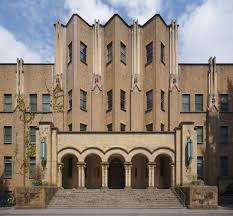
Exciting News from AAIRL: Two Groundbreaking Papers Accepted at CAADRIA 2025 in Tokyo!
We are thrilled to share that two innovative papers from the AAIRL have been accepted for presentation at the prestigious CAADRIA 2025 conference in Tokyo. This recognition underscores our commitment to pushing the boundaries of architectural research and integrating cutting-edge technology into urban planning and design.
AI-Driven Recommendations for Strategic Urban Renewal
Authored by Dr. Haya Brama, Dr. Jonathan Dortheimer, Prof. Tal Grinshpoun, and our industry partner, Oded Landau, this paper introduces a revolutionary approach to urban renewal planning. The team has developed a decision support system that leverages advanced algorithms and machine learning techniques to reimagine urban landscapes. By allowing municipal stakeholders to explore new parcel combinations, the system transcends the limitations of existing urban layouts.
The core of this system is its modular plugin architecture, which guarantees flexibility and transparency in decision-making. Custom-designed algorithmic solutions within these plugins address urban renewal’s specific and nuanced requirements. Moreover, deep learning techniques are employed to predict the potential of future projects based on historical data, a feature particularly beneficial for peripheral regions with low-profit margins. Successful renewal in these areas can catalyze further growth and development, making this model a powerful tool for urban planners.
Addressing Religious Code with Computer Code: A Genetic Algorithm Approach to Sukkah Architecture
The second paper, “Addressing Religious Architectural Restrictions with Computer Code: A Genetic Algorithm Approach,” by Gaya Bitman and Dr. Jonathan Dortheimer tackles the unique architectural challenge of designing sukkah balconies in high-rise multi-residential buildings. Jewish law requires each balcony to have an unobstructed view of the sky, a stipulation that complicates architectural design and limits building heights in densely populated areas.
This study models the design problem as a single-objective optimization task using a Genetic Algorithm (GA), a popular method in parametric architecture. However, the research identifies significant limitations in the GA’s application to design, such as rapid convergence that restricts solution exploration and difficulties in meeting specific minimum requirements. To address these challenges, the authors propose an enhanced approach that involves executing multiple parallel, more minor GAs to improve random sampling. Additionally, they introduce an evaluation function distinct from the fitness function, allowing for selecting solutions that meet critical minimum criteria. This refined method offers a more effective strategy for designing sukkah balconies and demonstrates an improved application of GA in architectural design.
See you in CAADRIA 2025 at Tokyo University!


